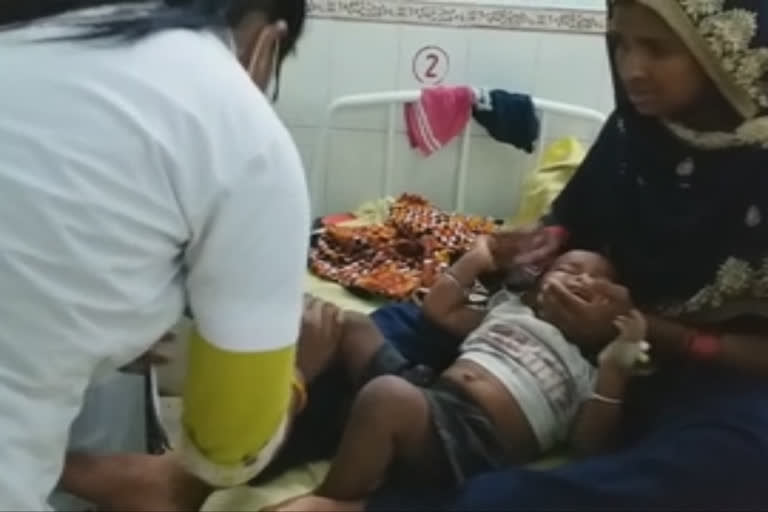Muzaffarpur(Bihar): Acute Encephalitis Syndrome (AES) has claimed the lives of three more children in Sri Krishna Medical College and Hospital (SKMCH) of Bihar's Muzaffarpur district. So far at least 189 children have died suffering from Chamki fever.
Although, the administration of SKMCH has confirmed the death of only one kid. In the last 24 hours, seven new AES patients have been admitted out of which 6 children have been admitted to Kejriwal hospital while one has been admitted to SKMCH.
Due to extensive heat and humidity in Muzaffarpur and its adjoining areas, children are highly exposed to Acute Encephalitis Syndrome. According to government reports, the cause behind the rising number of deaths is Hypoglycemia which is driven by low blood sugar and is a part of AES.
What is Acute Encephalitis Syndrome?
AES is defined as inflammation (swelling and irritation) of the brain. Most of the victims are between the age group of 1 to 10 years. AES is mostly seen during April to June among children who are undernourished. The inflammation is caused by an infection invading the brain due to bacteria, fungi or parasites, chemicals, toxins and non-infectious agents.
- Symptoms:
- High Fever
- Vomiting
- Headache
- Sensitivity to light
- Confusion
- Stiff neck and back
- Nausea
- Personality changes
- Problems with speech or hearing
- Hallucinations
- Memory loss
- Drowsiness
- In severe cases seizures, paralysis and coma
- Treatment:
- Children suffering from AES need care in ICU.
- Timely record of blood pressure, heart rate, breathing and body fluids to prevent further swelling of the brain.
- Doctors provide Corticosteroids and Antiviral drugs to reduce swelling in the brain. Anticonvulsants might be given to a child having seizures.
- Acetaminophen medicine can help with fever and headaches.
- The patient is also given anti-inflammatory drugs to reduce headaches and temperature.
- Healthy food and glucose in the form of sweets after meals must be provided to the patient.
- Points to remember:
- Avoid children coming in contact with contaminated water.
- Keep the surroundings clean to avoid insects like mosquitoes and flies.
- Avoid direct contact with sunlight.
- Patients must be taken to Primary Health Centres (PHCs) and hospitals for treatment.
- Prevention:
Government of India has approved two doses of Japanese Encephalitis (JE) vaccine, one to be given along with measles at the age of 9 months and the second with DPT booster at the age of 16-24 months, as prevention for AES.
Read:| Bihar’s Encephalitis Crisis: What are the causes and symptoms?



